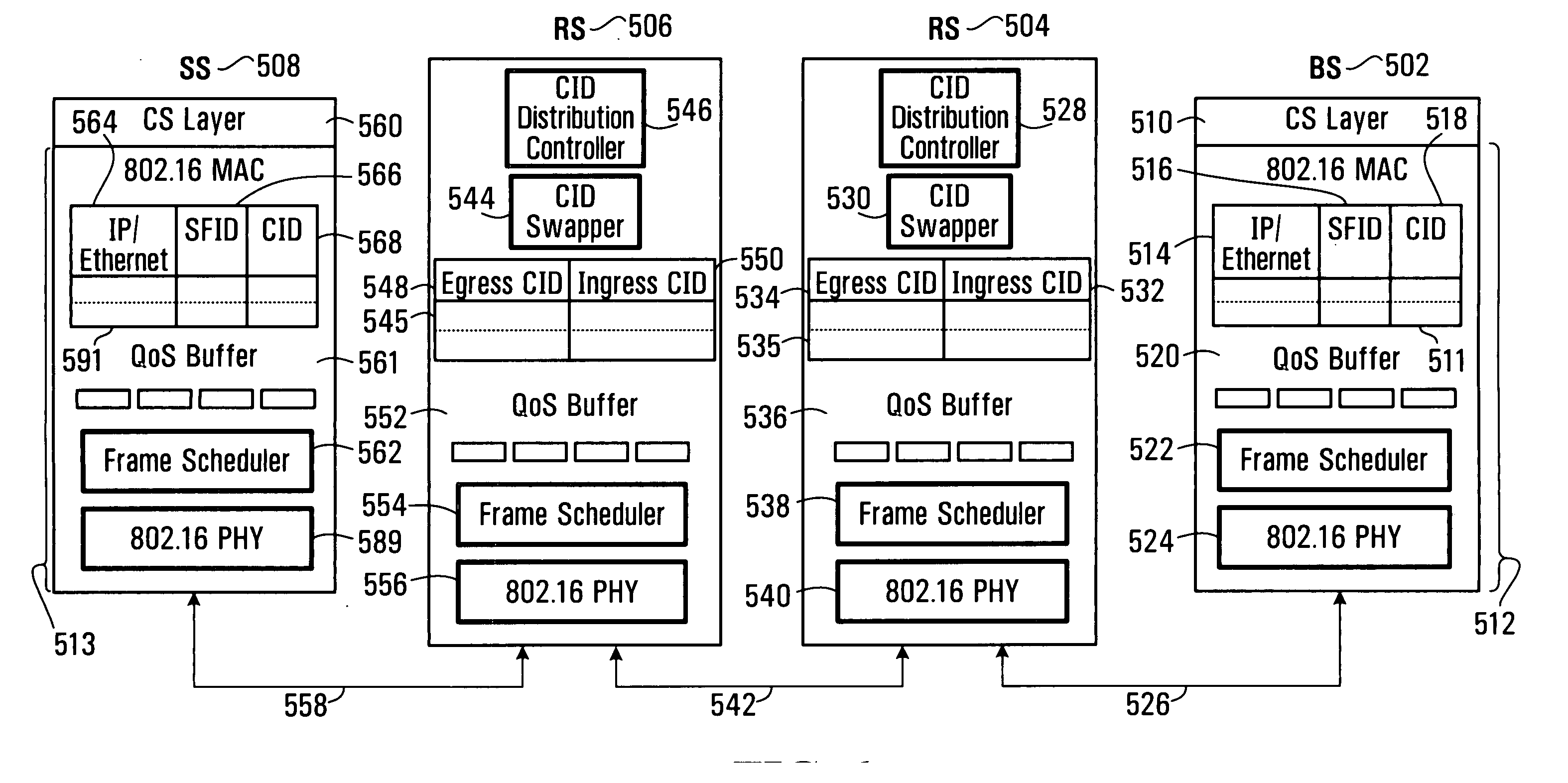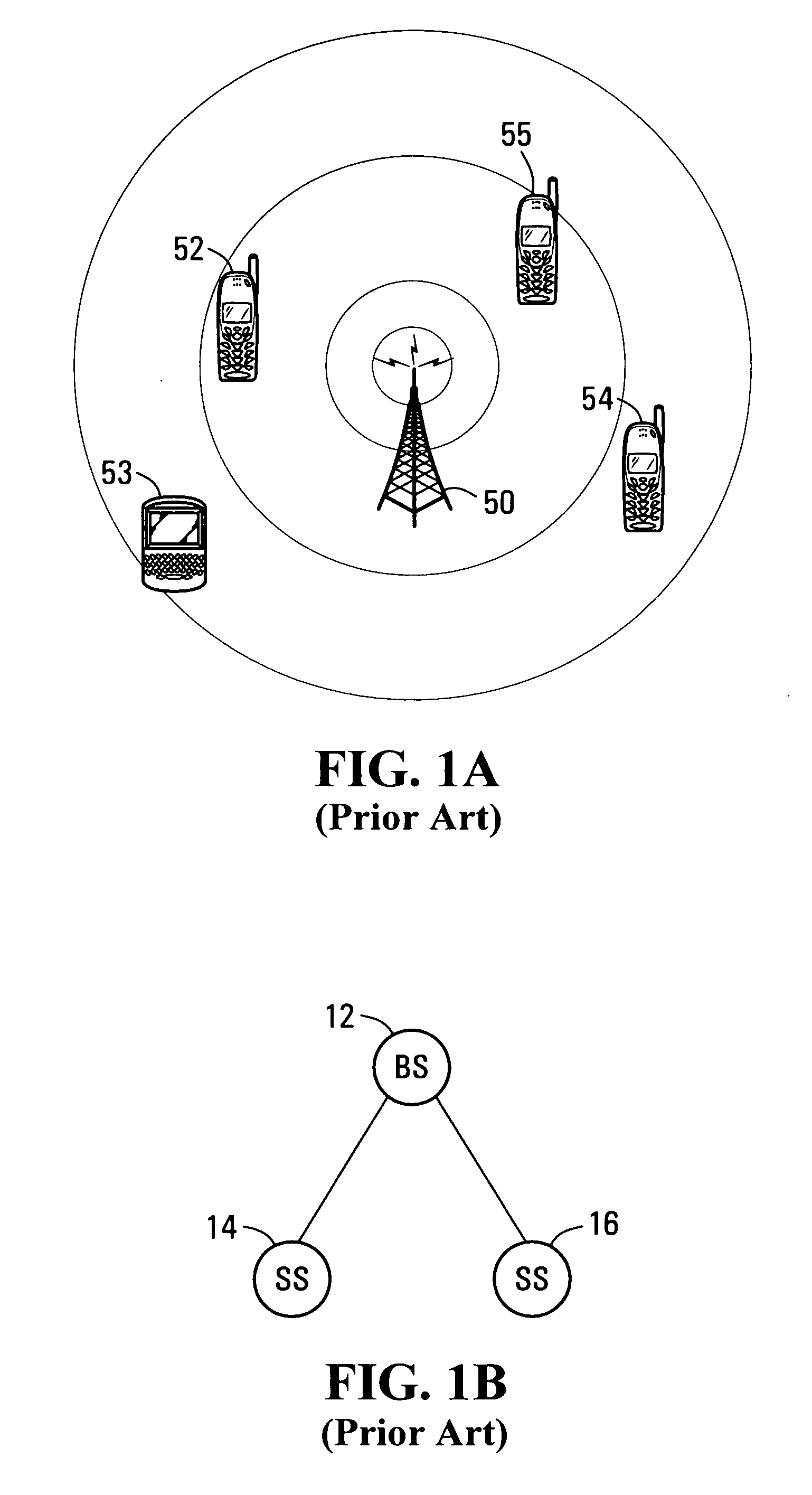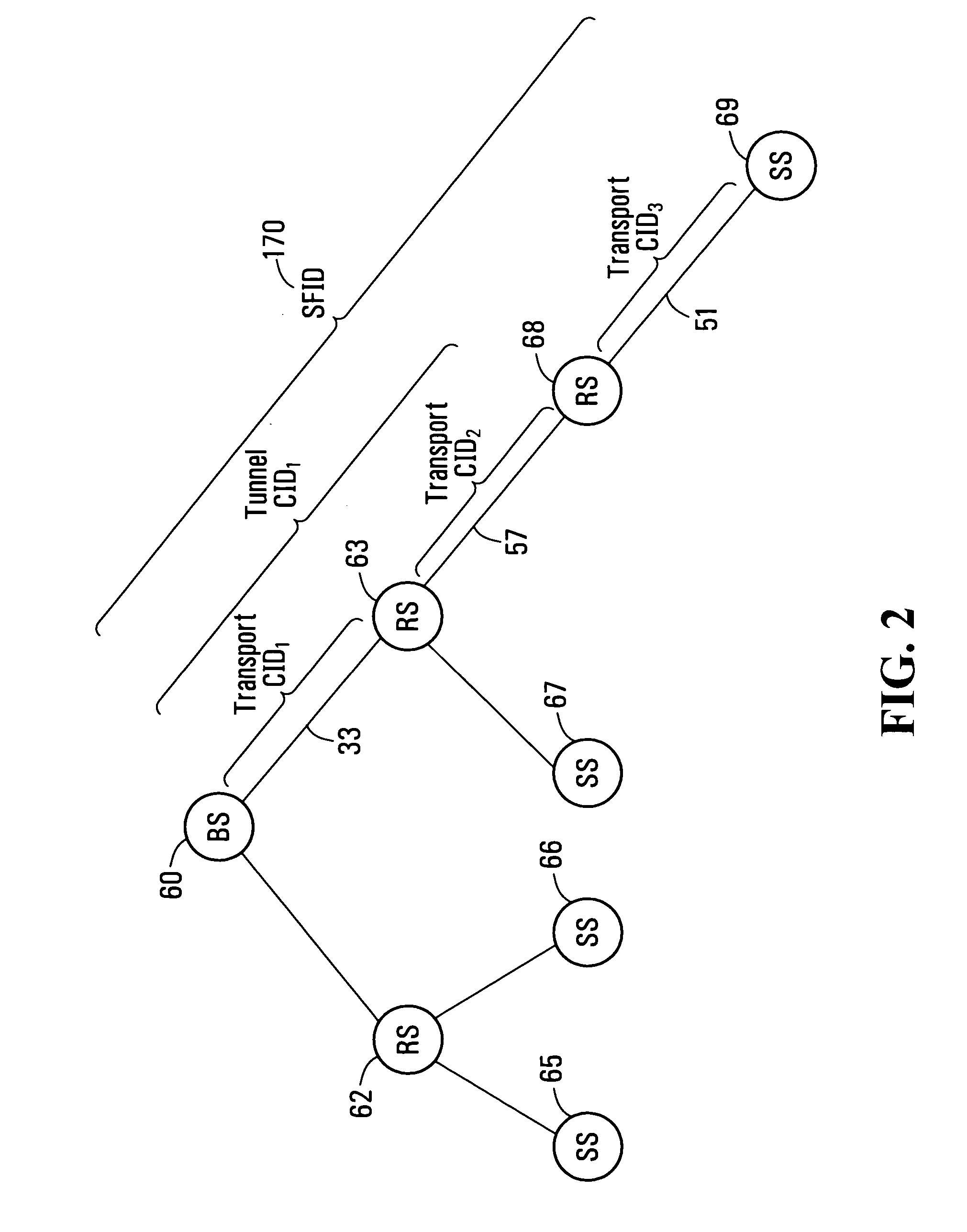Method and system for a wireless multi-hop relay network
a multi-hop relay and wireless technology, applied in the field of wireless signalling protocols and systems, can solve the problems of system capacity and performance beyond the boundaries of the bs coverage area, signal degradation, and increase the complexity of handover
- Summary
- Abstract
- Description
- Claims
- Application Information
AI Technical Summary
Benefits of technology
Problems solved by technology
Method used
Image
Examples
Embodiment Construction
[0032] A wireless multi-hop relay access network is described herein. In a multi-hop relay access network, relay stations (RS's) are introduced for fixed, nomadic and mobile relay usage. The functional scope of a relay station can scale from being very simple such as an analog signal repeater, to a base station compliant fully functional device capable of radio resource scheduling, security authentication and connection management for mobile stations, in case a base station fails.
[0033]FIG. 2 is a schematic diagram of a very simple two-tier PMP relay network in which RS 62 and RS 63 supports PMP transmission to the attached SS and conducts relay functions between BS and SS. At the tree trunk level, BS 60 communicates with RS 62 and RS 63. RS 62 in turn communicates with SS 65 and SS 66. Similarly, RS 63 communicates with SS 67 and RS 68. RS 68 communicates with SS 69.
[0034] Through the use of a PMP multi-hop relay protocol, a payload can, for example, be delivered from BS 60 to SS...
PUM
 Login to View More
Login to View More Abstract
Description
Claims
Application Information
 Login to View More
Login to View More - R&D
- Intellectual Property
- Life Sciences
- Materials
- Tech Scout
- Unparalleled Data Quality
- Higher Quality Content
- 60% Fewer Hallucinations
Browse by: Latest US Patents, China's latest patents, Technical Efficacy Thesaurus, Application Domain, Technology Topic, Popular Technical Reports.
© 2025 PatSnap. All rights reserved.Legal|Privacy policy|Modern Slavery Act Transparency Statement|Sitemap|About US| Contact US: help@patsnap.com



